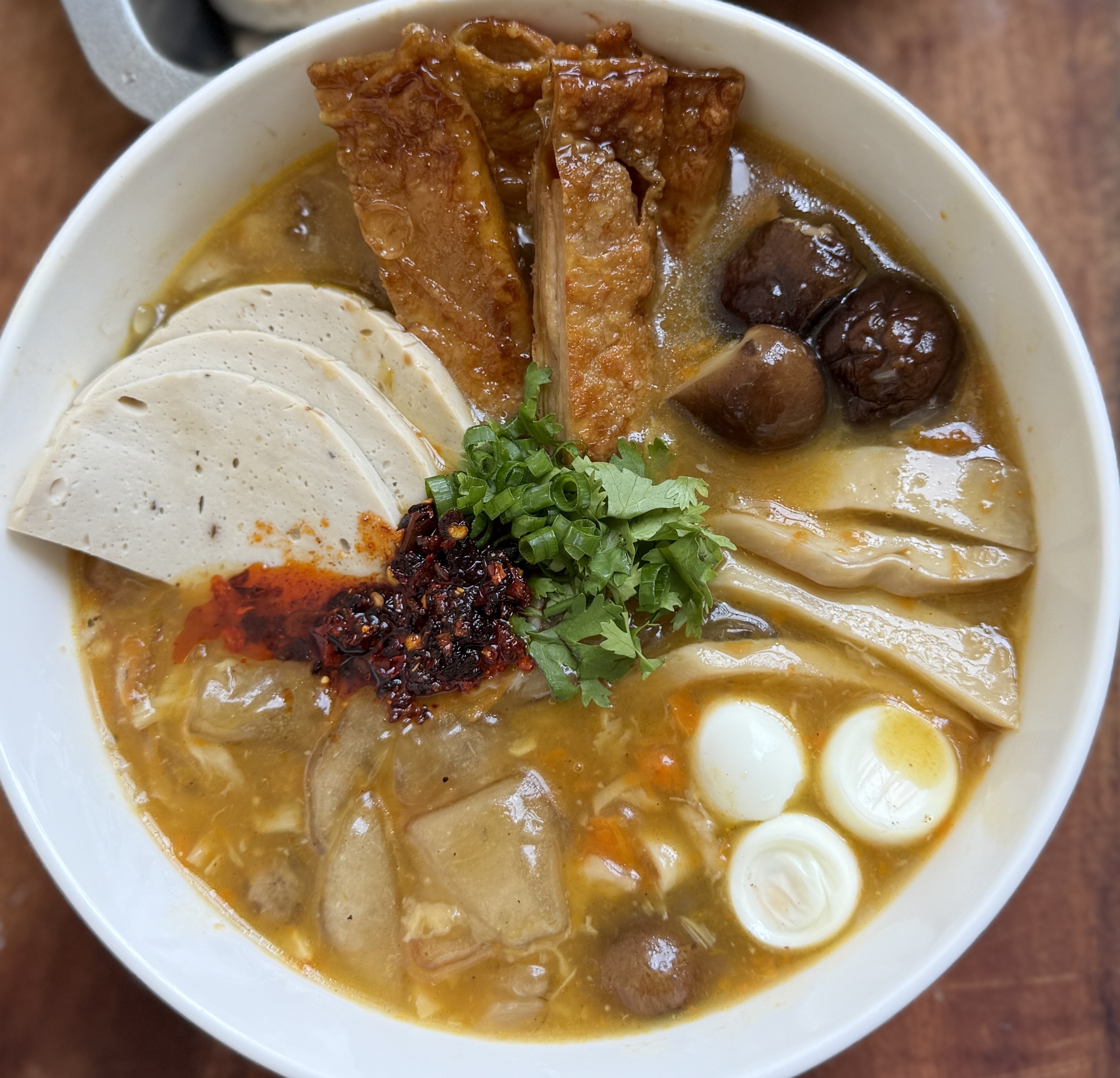If you’ve ever sat down with a steaming bowl of Vietnamese noodle soup and felt like the world got just a little bit cozier - you’ll understand why bánh canh chay holds such a special place in many Vietnamese kitchens. Translating to vegetarian thick noodle soup, bánh canh chay is a plant-based twist on the beloved bánh canh dish, known for its thick, chewy tapioca noodles and savory, slow-simmered broth.
Unlike its meat, or seafood-based cousins, bánh canh chay uses no animal products, yet it still delivers that deeply satisfying flavor you'd expect from a comfort soup. This version celebrates vegetables, mushrooms, and traditional Vietnamese aromatics - each component layered carefully to build richness, texture, and balance.
What Is Bánh Canh Chay?
Let’s break it down:
- Bánh canh refers to the type of noodle - thick, round, and chewy, made traditionally from tapioca flour or a mix of tapioca and rice flour. Think of them as the Vietnamese version of udon, but silkier and slightly more translucent.
- Chay means vegetarian or vegan, and it’s a central part of Buddhist cuisine in Vietnam.
Put them together, and you have a soulful, plant-powered noodle soup that’s not only comforting and filling but also naturally gluten-free and meat-free. Whether you’re practicing a plant-based lifestyle or simply looking for a lighter, more nourishing take on traditional Vietnamese dishes, bánh canh chay delivers on every front.
Building the Broth: Flavor without bones
Growing up, I believed good soup required bones - long hours of simmering, endless skimming, that signature depth only meat could offer. That changed the day my mom handed me a bowl of her homemade bánh canh chay. No bones, no meat. Just veggies and mushrooms.
I was skeptical, but the moment I took a sip, it clicked.
The broth was sweet, earthy, and savory - balanced in a way that felt light yet nourishing. She had built that depth from root vegetables like daikon, chayote, carrot, and yam bean, simmered until every drop of sweetness had infused the pot. She then added a medley of sautéed garlic, onion, shallots, and leeks - what she called the "Vietnamese mirepoix" - to bring the whole thing to life.
Since then, I’ve played with the broth, adding corn, lotus root, even luffa when it’s in season. Each vegetable offers a different profile: corn adds buttery sweetness, lotus root brings a neutral, starchy calm, and luffa has a soft, subtly bitter edge that rounds out the soup beautifully. There’s no hard rule here - just balance. Mix 3 to 5 broth-friendly root vegetables, and you’ve got magic.
💡 Bonus tip: Make a big batch of just the broth, freeze it, and you’ve got a ready-to-go vegan soup base for busy weeknights.
The Noodles: Handmade Texture That Feels Like a Hug
What really defines bánh canh are the noodles. These thick, chewy strands are made from tapioca flour - which makes them naturally gluten-free and delightfully springy.
They absorb the broth just enough to become slick and savory, while still keeping their own chewy personality. As they cook in the soup, they also release a little starch, naturally thickening the broth into that iconic glossy consistency.
Rolling and slicing them by hand might sound intimidating, but it’s surprisingly easy - and weirdly relaxing. And once you taste them fresh? Store-bought noodles just won’t compare.
Mushrooms, Mushrooms, Mushrooms
When you’re making a vegetarian noodle soup like bánh canh chay, mushrooms are everything. Without meat or bones to lean on, they step in to build that deep, savory flavor we all crave - and they do it so well.
I normally use:
- King oyster mushrooms bring that satisfying, almost chewy bite - like the “meat” of the bowl.
- Straw mushrooms are softer and soak up the broth beautifully, so every bite is juicy.
- Beech mushrooms add a little earthiness and a nice springy texture that keeps things interesting.
Give them a quick sear with a sprinkle of vegan broth mix and cracked pepper, and the whole kitchen starts smelling amazing. These aren’t just background players - they soak in all the flavor from the broth and then give it right back with every spoonful.
Using a mix of mushrooms adds depth to the soup, both in taste and texture. It’s that kind of subtle layering that makes bánh canh chay feel so comforting and full, even without any meat in sight.
Vegan "Crab" Paste (Optional, But Worth It)
This little touch takes the soup to the next level. Made by boiling oyster mushrooms and carrots and mashing them into a soft, paste-like texture, this vegan “crab” paste adds texture and a subtle sweetness that rounds out the broth. It’s not a bold flavor on its own - but it adds dimension and mouthfeel, especially when stirred into the pot just before serving.
Toppings: Color, Crunch, and Contrast
To bring everything together, don’t skip the toppings. A mix of textures and flavors helps balance the richness of the soup:
- Vegan cha lua (pork sausage) for savory firmness
- Fried tofu mushroom wraps for crunch
- Chopped herbs like green onion and cilantro for freshness
- Chili crisp or fresh chili slices for a gentle heat
Each topping adds contrast - cool against hot, crispy against soft, spicy against sweet. They elevate the soup from comforting to unforgettable.

Final Thoughts: A Bowl That Builds Itself
What makes bánh canh chay special isn’t just the ingredients—it’s how they build on each other. The broth sets the tone with gentle sweetness. The noodles bring substance. The mushrooms deepen the flavor. The paste adds roundness. The toppings offer surprise.
It’s the kind of dish that invites you to slow down and enjoy the process, from slicing vegetables to kneading noodles to ladling that final, steaming spoonful into a bowl.
And every time you make it, it’s a little different - but always satisfying.










